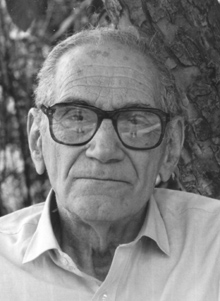Related Research Articles
Persistence of vision traditionally refers to the optical illusion that occurs when visual perception of an object does not cease for some time after the rays of light proceeding from it have ceased to enter the eye. The illusion has also been described as "retinal persistence", "persistence of impressions", simply "persistence" and other variations. A very commonly given example of the phenomenon is the apparent fiery trail of a glowing coal or burning stick while it is whirled around in the dark.

In visual perception, an optical illusion is an illusion caused by the visual system and characterized by a visual percept that arguably appears to differ from reality. Illusions come in a wide variety; their categorization is difficult because the underlying cause is often not clear but a classification proposed by Richard Gregory is useful as an orientation. According to that, there are three main classes: physical, physiological, and cognitive illusions, and in each class there are four kinds: Ambiguities, distortions, paradoxes, and fictions. A classical example for a physical distortion would be the apparent bending of a stick half immerged in water; an example for a physiological paradox is the motion aftereffect. An example for a physiological fiction is an afterimage. Three typical cognitive distortions are the Ponzo, Poggendorff, and Müller-Lyer illusion. Physical illusions are caused by the physical environment, e.g. by the optical properties of water. Physiological illusions arise in the eye or the visual pathway, e.g. from the effects of excessive stimulation of a specific receptor type. Cognitive visual illusions are the result of unconscious inferences and are perhaps those most widely known.
Saccadic masking, also known as (visual) saccadic suppression, is the phenomenon in visual perception where the brain selectively blocks visual processing during eye movements in such a way that neither the motion of the eye nor the gap in visual perception is noticeable to the viewer.

Max Wertheimer was a Czech-born psychologist who was one of the three founders of Gestalt psychology, along with Kurt Koffka and Wolfgang Köhler. He is known for his book, Productive Thinking, and for conceiving the phi phenomenon as part of his work in Gestalt psychology.

An afterimage is an image that continues to appear in the eyes after a period of exposure to the original image. An afterimage may be a normal phenomenon or may be pathological (palinopsia). Illusory palinopsia may be a pathological exaggeration of physiological afterimages. Afterimages occur because photochemical activity in the retina continues even when the eyes are no longer experiencing the original stimulus.

The term Beta movement is used for the optical illusion of apparent motion in which the very short projection of one figure and a subsequent very short projection of a more or less similar figure in a different location are experienced as one figure that moves.

The night sky is the nighttime appearance of celestial objects like stars, planets, and the Moon, which are visible in a clear sky between sunset and sunrise, when the Sun is below the horizon.

The Ternus illusion, also commonly referred to as the Ternus Effect is an illusion related to human visual perception involving apparent motion. In a simplified explanation of one form of the illusion, two discs, are shown side by side as the first frame in a sequence of three frames. Next a blank frame is presented for a very short, variable duration. In the final frame, two similar discs are then shown in a shifted position. Depending on various factors including the time intervals between frames as well as spacing and layout, observers perceive either element motion, in which L appears to move to R while C remains stationary or they report experiencing group motion, in which L and C appear to move together to C and R. Both element motion and group motion can be observed in animated examples to the right in Figures 1 and 2.
Multistable perception is a perceptual phenomenon in which an observer experiences an unpredictable sequence of spontaneous subjective changes. While usually associated with visual perception, multistable perception can also be experienced with auditory and olfactory percepts.

An Ames room is a distorted room that creates an optical illusion. Likely influenced by the writings of Hermann Helmholtz, it was invented by American scientist Adelbert Ames Jr. in 1946, and constructed in the following year.
Entoptic phenomena are visual effects whose source is within the human eye itself.
Closed-eye hallucinations and closed-eye visualizations (CEV) are hallucinations that occur when one's eyes are closed or when one is in a darkened room. They can be a form of phosphene. Some people report CEV under the influence of psychedelics; these are reportedly of a different nature than the "open-eye" hallucinations of the same compounds. Similar hallucinations that occur due to loss of vision are called visual release hallucinations.

The motion aftereffect (MAE) is a visual illusion experienced after viewing a moving visual stimulus for a time with stationary eyes, and then fixating a stationary stimulus. The stationary stimulus appears to move in the opposite direction to the original stimulus. The motion aftereffect is believed to be the result of motion adaptation.

Human senses are not naturally geared for the inflight environment. Pilots may experience disorientation and loss of perspective, creating illusions that range from false horizons to sensory conflict with instrument readings or the misjudging of altitude over water.

Motion Induced Blindness (MIB) is a phenomenon of visual disappearance or perceptual illusions observed in the lab, in which stationary visual stimuli disappear as if erased in front of an observer's eyes when masked with a moving background. Most recent research has shown that microsaccades counteract disappearance but are neither necessary nor sufficient to account for MIB.

Illusions of self-motion occur when one perceives bodily motion despite no movement taking place. One can experience illusory movements of the whole body or of individual body parts, such as arms or legs.
The broken escalator phenomenon, also known as the escalator effect and the Walker effect, is the sensation of losing balance, confusion or dizziness reported by some people when stepping onto an escalator which is not working. It is said that there is a brief, odd sensation of imbalance, despite full awareness that the escalator is not going to move.

Hans Wallach was a German-American experimental psychologist whose research focused on perception and learning. Although he was trained in the Gestalt psychology tradition, much of his later work explored the adaptability of perceptual systems based on the perceiver's experience, whereas most Gestalt theorists emphasized inherent qualities of stimuli and downplayed the role of experience. Wallach's studies of achromatic surface color laid the groundwork for subsequent theories of lightness constancy, and his work on sound localization elucidated the perceptual processing that underlies stereophonic sound. He was a member of the National Academy of Sciences, a Guggenheim Fellow, and recipient of the Howard Crosby Warren Medal of the Society of Experimental Psychologists.
Fred W. Mast is a full professor of Psychology at the University of Bern in Switzerland, specialized in mental imagery, sensorimotor processing, and visual perception. He directs the Cognitive Psychology, Perception, and Research Methods Section at the Department of Psychology of the University of Bern.
Muzafer Sherif was a Turkish-American social psychologist. He helped develop social judgment theory and realistic conflict theory.
References
- ↑ Levy, John (1972). "Autokinetic illusion: A systematic review of theories, measures, and independent variables". Psychological Bulletin. 78 (6): 457–474. doi:10.1037/h0033614. PMID 4566651.
- ↑ von Humboldt, Alexander (1850). "Voyage aux regions équinoctiaux". Kosmos. 3: 73–74.
- ↑ Gregory, R. L. (1977). Eye and Brain: The Psychology of Seeing (Third ed.). London: Weidenfeld & Nicolson. p. 105. ISBN 0-297-77303-8.
- ↑ Wertheimer, Michael (1968). "A Case of "Autostasis" or Reverse Autokinesis". Perceptual and Motor Skills. 26 (2): 417–418. doi:10.2466/pms.1968.26.2.417. PMID 5654860. S2CID 39932855.